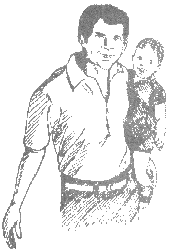Surviving the Cold
 Living in the North and spending
as much time as possible in the
out-of-doors, I have always noticed and
been intrigued by how many birds
stay in our area through bitterest
cold and heaviest snow and ice.
Hiking through the woods in 20
below weather, I see hundreds
of chickadees, kinglets, crows,
owls, and other birds all
looking healthy and apparently
thriving in the bitter
weather. As scientists study
bird behavior in these cold climates, we find an incredible number of
different methods are employed to beat the cold.
Living in the North and spending
as much time as possible in the
out-of-doors, I have always noticed and
been intrigued by how many birds
stay in our area through bitterest
cold and heaviest snow and ice.
Hiking through the woods in 20
below weather, I see hundreds
of chickadees, kinglets, crows,
owls, and other birds all
looking healthy and apparently
thriving in the bitter
weather. As scientists study
bird behavior in these cold climates, we find an incredible number of
different methods are employed to beat the cold.
Many birds like the grouse will dive into snow drifts and spend the
coldest periods under two feet of snow where the temperature is 6O degrees F
higher than the outside temperatures. Many birds like pheasants and
turkeys have counter-current heat exchange systems in their legs in
which the arteries run alongside the veins. The returning cold venous
blood is warmed by the arterial blood so much less heat is lost.
An interesting heat conservation system is involved in the roosting
patterns of birds. Birds frequently nest in groups, but these groups
are not just random accumulations. The birds approach a nesting tree,
making calls as they approach. Mating pairs will nestle up to each
other instantly, as will siblings. The birds in the center hunch up with
their bills pointed up. Birds on the edges hold their heads to the side.
Even just having three birds in this arrangement reduces heat losses
by 37%.
Another method of surviving cold weather in birds is their eating
behavior. Studies on chickadees have shown that at the start of a day,
they will have no body fat at all but, by the end of the day, there are
layers of fat layered in the sternum to be turned into heat. Many birds
shiver to activate the heat production process. Some lower their body
temperature to reduce the heat losses. Some owls even crouch on a
frozen carcass, ussing their body heat to thaw out their food.
The importance of life continuing even during cold periods is
obvious. The ingenious ways that living things survive and prosper
in the cold speak of planning and design. Trial and error does not work
for these cases because error means death. We can know there is a God
through the things He has made. (Romans 1:19-23).
References: Natural History, February, 1993, pages 4-9 and
Sports Afield, December, 1990, page 42
The Incredible Immune System A War Machine Ready to Fight
Just 20 years ago, scientists had only fragments of
information about how the many cells that make up your immune
system interact to protect you against disease. Through
-advances is cancer research, scientists now believe more
than 100 million immune cells exist. For every virus or
bacterium, there seems to be an inumune cell specifically
designed to hunt down and destroy it. -Mayo Clinic Health
Letter Medical Essay, February, 1995, page 1.
The world in which we live is ruled by microscopic organisms.
These small panicles of life are the real workhorses of all life. They
help our bodies digest food; they aid our reproductive systems; they
decompose our wastes, prepare our soil, purify our water, and supply
nutrients to our animals. Sometimes, due to mutations or other
changes, they attack our bodies, making us ill. As the quote from the
Mayo Clinic above says, we have a carefully designed system in our
bodies which elminates the microscopic organisms that would do us
harm.
The complexity of this system is astounding. It begins with the
cells that actually do the fighting. There are three basic types:
B and T Cells. These are white blood cells which recognize and
coordinate an attack on specific invading microorganisms.
Phagocytes. These white blood cells eat up anything that is not
wanted. One kind of phagocyte called a macrophage gets rid of worn
out cells and debris.
Chemical Killers. These white blood cells release powerful
chemicals that destroy microorganisms.
Each of these cells carries the same chemical identification card
with a unique molecular pattern on it so that your immune system does
not attack itself.
Your body has an elaborate defense system designed to stop
microorganisms at all places where they might enter your body.
These include:
Tonsils and Adenoids--which contain immune cells that protect
your respiratory system.
Spleen--which has immune cells that destroy organisms that
have entered your blood stream.
Appendix and Peyer's Patches--which contain immune cells
that enter through your digestive system.
Lymph Nodes--which house B and T cells.
Lymph Vessels--which transport immune cells to your blood
and immune organs.
Bone Marrow--which makes immune cells.
Thymus--where white blood cells mature into T cells.
Even in our simplified explanation, it is obvious how sophisticated
and elaborate this system is. An undamaged immune system
can keep us healthy and free of disease, especially when cared for
properly. David's statement takes on a special meaning with this
knowledge of God's marvelous design. "I will praise thee Lord, for
I am fearfully and wonderfully made" --Psalm 139:14.
 Back to Contents November/December 1995
Back to Contents November/December 1995
 Living in the North and spending
as much time as possible in the
out-of-doors, I have always noticed and
been intrigued by how many birds
stay in our area through bitterest
cold and heaviest snow and ice.
Hiking through the woods in 20
below weather, I see hundreds
of chickadees, kinglets, crows,
owls, and other birds all
looking healthy and apparently
thriving in the bitter
weather. As scientists study
bird behavior in these cold climates, we find an incredible number of
different methods are employed to beat the cold.
Living in the North and spending
as much time as possible in the
out-of-doors, I have always noticed and
been intrigued by how many birds
stay in our area through bitterest
cold and heaviest snow and ice.
Hiking through the woods in 20
below weather, I see hundreds
of chickadees, kinglets, crows,
owls, and other birds all
looking healthy and apparently
thriving in the bitter
weather. As scientists study
bird behavior in these cold climates, we find an incredible number of
different methods are employed to beat the cold.
